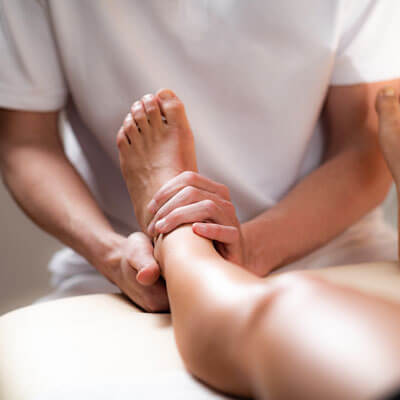Leg Length Inequality (Short Leg) Treatment at Spine and Laser Center
Leg Length Inequality (short leg) has profound effects on the body’s biomechanics and may result in back pain.
Overview
 Leg length inequality or short leg may affect as many as 60 to 90 percent of the population. Categorized as either functional or structural, both have profound effects on the body’s biomechanics and may result in back pain, the most common symptom. Other resulting conditions include arthritis of the knee, psoasitis, arthritis of the hip, patellar tendinitis, patellofemoral pain syndrome, plantar fasciitis, medial tibial stress syndrome and metatars, iliotibial band syndrome with lateral knee pain, trochanteric bursitis, sacroiliac discomfort, Achilles tendinitis and cuboid syndrome.
Leg length inequality or short leg may affect as many as 60 to 90 percent of the population. Categorized as either functional or structural, both have profound effects on the body’s biomechanics and may result in back pain, the most common symptom. Other resulting conditions include arthritis of the knee, psoasitis, arthritis of the hip, patellar tendinitis, patellofemoral pain syndrome, plantar fasciitis, medial tibial stress syndrome and metatars, iliotibial band syndrome with lateral knee pain, trochanteric bursitis, sacroiliac discomfort, Achilles tendinitis and cuboid syndrome.
- Functional Short Leg: A difference in the alignment of the supporting structures between the ground and the femur head. This is most commonly caused by excessive pronation (the natural rolling in of the foot as one walks) but may also be due to knock knees (knee valgus).
- Anatomical Short Leg: A difference in the size and/or length of the thigh bone (femur). This is most often caused by growth asymmetry (which may be an inherited/genetic condition), but it may sometimes be due to fracture or surgery.
The body can tolerate such leg inequality for short periods, but over time, subtle and serious biomechanical problems throughout the body can occur. Its ability to adapt to abnormal stress may be overwhelmed and the surrounding soft tissues become exhausted. Consequently, routine movements require greater muscular effort and energy, and endurance is reduced. Excessive stress is transmitted to the ligaments, creating a vicious cycle of misalignment, muscle fatigue, and ligamentous stress.
Treatment
Your Chiropractor is likely to use a combination of techniques to help your condition, but treatment is dependent on the cause and your symptoms.
The first goal of treatment is to improve the alignment, and restore symmetry to the legs. While adjustments and exercises may be useful, an orthotic with a pronation wedge under the heel is usually needed for long-term correction. In most patients, providing the proper orthotic support for excessive pronation is all that is necessary to balance the functional leg lengths.
Spinal adjustments focus on providing better spinal column alignment, which in turn is designed to help address a number of associated conditions.
Specific exercises may be advised to help the affected muscles. When LLI causes a significant gait (walk) disturbance, physical therapy may be necessary.
Prevention
There is no real way to prevent short leg. However, keeping your bones and tissues strong and healthy through exercise and diet can help mitigate symptoms. Avoid tobacco and excessive alcohol use as these can weaken bones and cause problems with the blood supply in the extremities. Reduce your risk of injury by adhering to safety measures on the job and beyond (like wearing a seatbelt). Custom orthotics can provide additional support, stability, and shock absorption from the ground up.
Recovery
Though the body’s foundation can be “leveled” almost immediately with custom orthotics, it may take some time to adjust to a new, healthier alignment. Talk to your doctor to learn more.
Symptoms of Leg Length Inequality
Symptoms may include:
- Back pain
- Leg pain
- Pelvic obliquity
- Scoliotic deviations of the lumbar spine
- Increased risk of lower limb injury, especially in athletes
- Over time, premature degenerative changes of the lower kinetic chain and spine may occur

